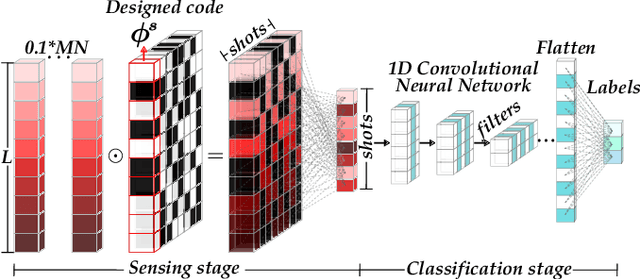Alejandra Hernandez-Rojas
LD-GAN: Low-Dimensional Generative Adversarial Network for Spectral Image Generation with Variance Regularization
Apr 29, 2023Abstract:Deep learning methods are state-of-the-art for spectral image (SI) computational tasks. However, these methods are constrained in their performance since available datasets are limited due to the highly expensive and long acquisition time. Usually, data augmentation techniques are employed to mitigate the lack of data. Surpassing classical augmentation methods, such as geometric transformations, GANs enable diverse augmentation by learning and sampling from the data distribution. Nevertheless, GAN-based SI generation is challenging since the high-dimensionality nature of this kind of data hinders the convergence of the GAN training yielding to suboptimal generation. To surmount this limitation, we propose low-dimensional GAN (LD-GAN), where we train the GAN employing a low-dimensional representation of the {dataset} with the latent space of a pretrained autoencoder network. Thus, we generate new low-dimensional samples which are then mapped to the SI dimension with the pretrained decoder network. Besides, we propose a statistical regularization to control the low-dimensional representation variance for the autoencoder training and to achieve high diversity of samples generated with the GAN. We validate our method LD-GAN as data augmentation strategy for compressive spectral imaging, SI super-resolution, and RBG to spectral tasks with improvements varying from 0.5 to 1 [dB] in each task respectively. We perform comparisons against the non-data augmentation training, traditional DA, and with the same GAN adjusted and trained to generate the full-sized SIs. The code of this paper can be found in https://github.com/romanjacome99/LD_GAN.git
Deep Coding Patterns Design for Compressive Near-Infrared Spectral Classification
May 27, 2022



Abstract:Compressive spectral imaging (CSI) has emerged as an attractive compression and sensing technique, primarily to sense spectral regions where traditional systems result in highly costly such as in the near-infrared spectrum. Recently, it has been shown that spectral classification can be performed directly in the compressive domain, considering the amount of spectral information embedded in the measurements, skipping the reconstruction step. Consequently, the classification quality directly depends on the set of coding patterns employed in the sensing step. Therefore, this work proposes an end-to-end approach to jointly design the coding patterns used in CSI and the network parameters to perform spectral classification directly from the embedded near-infrared compressive measurements. Extensive simulation on the three-dimensional coded aperture snapshot spectral imaging (3D-CASSI) system validates that the proposed design outperforms traditional and random design in up to 10% of classification accuracy.
* 5 pages, 5 figures
 Add to Chrome
Add to Chrome Add to Firefox
Add to Firefox Add to Edge
Add to Edge